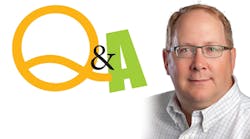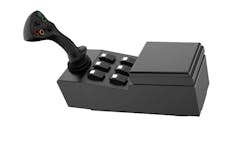2024 a Tough Year for Hydraulics, but Technological Advancements Persist
High interest rates and inventory levels have plagued much of the fluid power industry and its various customer markets in 2024. These factors contributed to reduced demand for hydraulic and pneumatic components as well as the machines in which they are utilized.
There have been some bright spots for the hydraulics market though, according to Ken Baker, CEO of Bailey Group, such as the non-residential construction market.
But overall, he said 2024 has been a difficult year for the hydraulics industry. He does see a light at the end of the tunnel, although it will take some time for recovery to occur in 2025 for the sector.
Despite the market challenges, Bailey Group and the hydraulics industry as a whole continues to innovate to bring new technologies to market to serve evolving customer requirements and be ready for when the market returns to more positive conditions.
Power & Motion spoke with Baker about market conditions in 2024, what areas of opportunity exist for hydraulics, and what is expected in 2025.
*Editor's Note: Questions and responses have been edited for clarity.
Power & Motion (P&M): How has 2024 been for Bailey and the hydraulics industry as a whole?
Ken Baker (KB): 2024 has been a tough year. Across the board, we are seeing impacts from reduced markets and overstocked customers. Agriculture equipment markets are struggling, and farm incomes have sharply reduced. Residential construction lowering and remodeling reductions have impacted the lumber and forestry equipment markets. The transport equipment market is also struggling.
The one bright spot in our markets was the non-residential construction market. Projects in queue have continued well. Year-over-year growth, though, is starting to slow.
P&M: What have been some of the biggest challenges, and opportunities, in 2024?
P&M: What industry trends are currently having the largest impact on your hydraulic component designs, and could you offer examples of specific ways in which they are being impacted?
KB: The integration of more complex designs, mentioned above, is the industry trend I would highlight. Customers want us to handle more integration of solutions, making their assembly operations easier. Both through integration and kitting operations, we are getting more requests for these types of solutions.
P&M: Are there any new trends or technology needs you see entering the hydraulics market and influencing future designs? If so, what are these and what impacts do you see them having?
KB: We see continuation of existing trends in electronic and sensor integration. The uptick in these additions is increasing at a slow but steady rate. Increased complexity of solutions for hydraulics and electro-hydraulics is continuing.
We have recently increased the focus and size of our Field Applications team to help customers with these integration efforts. Field Applications, coupled with great sales team members, continue to be a winning formula for us.
P&M: What opportunity areas do you see for hydraulics in the coming 1-2 years?
KB: From a market perspective, we are 6-9 months from full recovery, in our view. Residential construction should pick up, with deregulation of construction markets. This should help our forestry equipment customers. Non-residential construction will be helped with further reduction in interest rates, though this will be a slow and steady process. Agriculture is the largest unknown. Yields have been so strong, worldwide, that farm commodity price increases may continue to struggle.
At Bailey, we have opportunities to continue to expand our technical capability for serving our customers. We have always had strong technical support within our company. We have, though, been focused on increasing our engineering and solutions capabilities for 3 years. This includes changes in hiring focus, education for existing staff, and high-quality product offerings (both manufactured and distributed).
P&M: Many market reports indicate 2025 will be the start of better market conditions for many sectors — so how are you and Bailey feeling about 2025? And what factors are influencing your perspectives on the coming year?
KB: We view 2025 as having the potential to be better than 2024. I believe, though, that it will be the second quarter before we start to see the recovery. For all the market reasons already discussed, it will take time to realize the improvement with product shipment.




